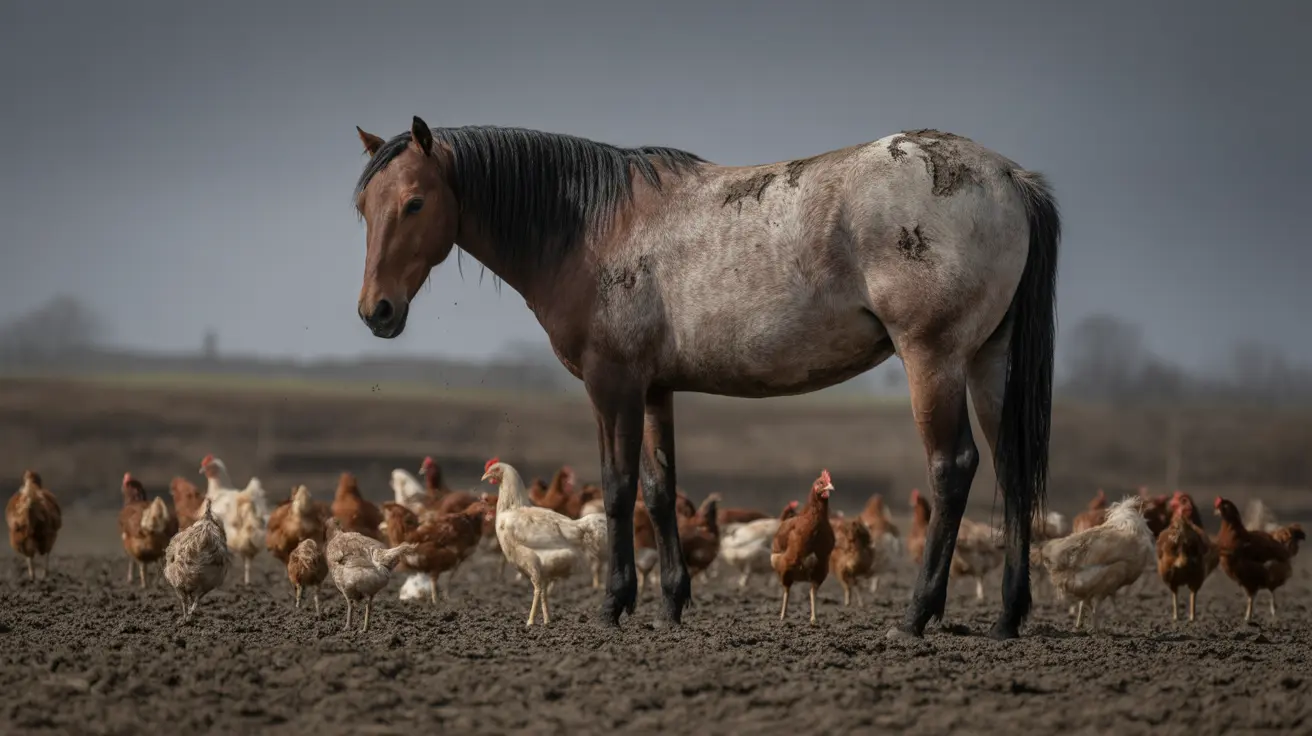The fascinating world of canine vision reveals unique adaptations that set dogs apart from humans in remarkable ways. While we often marvel at our furry companions' exceptional hearing abilities, their visual system presents an equally intriguing study in evolutionary adaptation. From enhanced night vision capabilities to specialized motion detection, dogs' eyes are perfectly tuned to their needs and environment.
Understanding how dogs perceive their world through vision not only satisfies our curiosity but also provides valuable insights for pet owners, trainers, and veterinary professionals. This comprehensive guide explores the intricacies of dog vision, from their distinctive eye anatomy to practical implications for daily care and training.
The Unique Architecture of Canine Eye Anatomy
The dog eye structure shares fundamental components with human eyes but includes several specialized features that enhance their survival capabilities. These adaptations have evolved to support their historical roles as hunters and protectors, equipping them to navigate their environments with heightened awareness and responsiveness.
Essential Eye Components
- Sclera: The protective outer layer providing the eyeball with necessary structural support and helping maintain its shape.
- Cornea: The clear, dome-shaped front surface that focuses incoming light onto the internal structures of the eye, contributing significantly to vision clarity.
- Retina: A multi-layered light-sensitive membrane at the back of the eye that contains specialized photoreceptor cells, responsible for converting light signals into nerve impulses sent to the brain.
Specialized Features
- Tapetum Lucidum: A reflective layer behind the retina that amplifies available light, greatly improving vision in low-light environments and giving many dogs' eyes a noticeable greenish glow at night.
- Third Eyelid: Also known as the nictitating membrane, this additional protective layer helps protect the eye from debris and injury while providing extra lubrication to keep the surface moist and healthy.
- Strategic Eye Placement: Positioned on the sides of the head, the location of dog eyes optimizes peripheral vision, widening their field of view and aiding in predator detection as well as prey pursuit.
Dogs' Night Vision: Superior Dark Adaptation
One of the most impressive aspects of canine eyesight is their exceptional ability to see in low-light conditions. While humans' vision quickly dims at dusk and in the dark, dogs have several adaptations that enable them to navigate and even hunt when light is scarce. These features are a testament to their ancestral nocturnal and crepuscular habits, when activity increased at dawn or dusk.
- Higher concentration of light-sensitive rod cells: Dogs have more rod cells in their retinas than humans, allowing them to detect even low levels of light with greater sensitivity.
- Larger pupils: Their pupils can dilate more than humans', increasing the amount of light entering the eye.
- The reflective tapetum lucidum: This unique structure reflects light that passes through the retina back into the eye, giving photoreceptors a second chance to detect it and dramatically improving low-light vision.
Together, these adaptations allow dogs to move confidently and spot movement in environments where humans would largely be blind, such as moonlit nights or darkened rooms.
Color Perception and Visual Processing
Dogs see colors differently than humans do, operating with a dichromatic color vision system. Unlike humans, who possess three types of cone photoreceptors for perceiving a wide spectrum of colors, dogs have only two. This means that while they are not completely colorblind, their world is painted with a more limited palette.
What Dogs Can See
- Blues and yellows: Dogs distinguish these colors clearly, allowing toys and objects in these hues to stand out most vividly to them.
- Various shades of gray: A keen ability to detect subtle differences in brightness and shades makes dogs responsive to contrast more than color.
- Excellent contrast differentiation: This helps them identify edges, shapes, and moving objects effectively, especially in complex environments.
What Dogs Struggle to See
- Red-green color distinctions: Dogs have difficulty perceiving these hues, which often appear as shades of gray or brown.
- Orange hues: These blend with surrounding colors and do not stand out as they do for humans.
- Complex color patterns: Multicolored objects or detailed patterns may not register the same way, potentially looking monotone or dull.
Knowing this, pet owners often select toys and training tools in blue or yellow to make them easier for dogs to find and recognize.
Motion Sensitivity and Field of View
Dogs are masters at detecting movement. Their eyes, retina structure, and the neural pathways processing visual signals are all optimized for high motion sensitivity. This trait provided a survival advantage in the wild, allowing dogs to notice subtle gestures from prey or potential threats from a considerable distance.
- 240-270 degree field of view: Compared to the human field of view at approximately 180 degrees, many dogs can see much more of their surroundings without moving their heads.
- Enhanced peripheral vision: Their eye placement means dogs are better at noticing events to their left and right—useful for scanning for movement or approaching animals.
- Superior movement tracking: Wave a hand, toss a ball, or catch their attention with a fleeting motion—dogs are far more likely to spot and react to it, even from the corners of their vision.
This motion detection skill is why dogs often react instantly to small movements, whether it's a squirrel at the window or a tossed toy across the yard.
Dog Vision Comparison: Humans vs. Canines
When comparing canine and human vision, several key differences highlight how each species has adapted their senses to their specific needs and environments. While humans excel at discerning fine detail and a wide range of colors, canine vision is tuned for survival and hunting efficiency.
Visual Acuity
- Human vision typically 20/20: Most humans can see small details sharply at a standard distance.
- Dog vision generally 20/75: Dogs see less sharp detail, meaning what a human can see at 75 feet, a dog sees at 20 feet.
- Varying acuity among breeds: Some breeds, particularly those bred for sight-based tasks, may have slightly improved acuity but still are generally below human standards.
Depth Perception
- Limited binocular vision: The placement of dogs' eyes provides a smaller overlap for depth perception compared to humans.
- Better close-range perception in humans: When it comes to assessing depth and judging distances up close, humans have the advantage.
- Enhanced motion detection in dogs: Dogs make up for less depth perception with their heightened awareness of movement, even in low light or at a distance.
These differences influence not just what dogs see, but how they interact with their world, from playing fetch to responding to visual cues during training.
Practical Applications and Care
Understanding the nuances of dog vision empowers pet owners and trainers to optimize their approach to care, play, and learning experiences. By appreciating these visual differences, we can better select toys, design training routines, and create safer home environments for our canine companions.
- Use high-contrast toys: Objects in blue or yellow are easiest for dogs to detect, especially in natural environments or on grass.
- Implement motion-based training techniques: Dogs respond more readily to hand signals, moving objects, and gesture-based commands than static visual cues alone.
- Regular eye health check-ups: Routine veterinary visits help ensure eye structures remain healthy, which is essential for a dog's quality of life.
- Appropriate lighting for nighttime activities: Providing sufficient but not glaring light supports safe indoor and outdoor activities during low-light hours.
Such informed practices can help enhance your dog’s daily experiences and well-being.
Frequently Asked Questions
How do dogs' eyes differ from human eyes?
Dogs have a wider field of view and greater sensitivity to movement, although their visual acuity is lower than that of humans. Their eyes also contain the tapetum lucidum, enhancing night vision, alongside features like the third eyelid for added protection.
Can dogs see in the dark?
Yes, dogs are well-equipped for low-light conditions due to features like the tapetum lucidum, a high number of rod cells, and large pupils—greatly expanding their ability to see in the dark compared to humans.
What colors can dogs see?
Dogs primarily perceive shades of blue and yellow and are unable to distinguish red and green hues. Their dichromatic vision limits their color palette, yet it is well-suited to their needs for contrast and movement detection.
How wide is a dog's field of view?
Depending on the breed and skull shape, a dog’s field of view typically ranges from 240 to 270 degrees, allowing them to monitor their surroundings more effectively than humans.
Are dogs better at detecting movement than humans?
Absolutely. Dogs have a natural talent for picking up even minor movements, especially in their peripheral vision, making them highly responsive to environmental changes.
How does vision affect dog behavior?
Visual perception guides dogs in interpreting signals, responding to training cues, and navigating new environments. Their reliance on contrast and movement informs play, training, and even social interactions.
What is binocular vision in dogs?
Binocular vision refers to the overlap of vision from both eyes, which supports depth perception. In dogs, this area is smaller than in humans, making their depth perception more limited to when they look directly ahead.
Do dogs see sharper images than humans?
No, their vision is generally less sharp than human vision. Most dogs have visual acuity between 20/75 and 20/100, meaning their perception of detail is far less than ours.
How does a dog's eye anatomy support its lifestyle?
Canine eye features like wide placement, the tapetum lucidum, and third eyelid provide evolutionary benefits such as superior night vision, better motion detection, and enhanced eye protection, all of which contribute to their roles as hunters and guardians.
Why is canine night vision so good?
The tapetum lucidum acts like a mirror in the back of the eye, reflecting light and giving photoreceptors a second opportunity to capture available illumination. This, in combination with large pupils and many rod cells, makes dogs exceptional at seeing in the dark.
Understanding how dogs see the world enriches our relationship with these remarkable animals and helps us provide better care and training. While their vision differs significantly from ours, it's perfectly adapted to their needs and lifestyle, demonstrating nature's incredible ability to evolve specialized solutions for different species.






